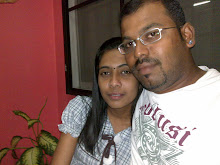Interesting facts about babies --(@

The human baby is truly amazing; the unfolding of his qualities and abilities a complex story.His tiny body has the backing of a million yearsof human evolution, helping different features to develop in a special sequence.Evolution has armed the infant withan irresistible appeal that ensures his parents care for him, feed him, and keep him clean and warm.For human beings,the parental burden is huge, lasting nearly two decades for each child,but it can also be a source of intense joy. And babies are our only certain form of immortality,ensuring that our genes do not die out.But the importance of a baby's first two years cannot be overestimated. Many of the qualities he acquires in thattime mark him for life. Nestling inside his fragile head, a newborn baby has the genetically inherited equipment that is needed for this development.All his parents have to do is offer him the setting in which this equipment can whirr into action. Read on for amazing factsabout a baby's potential.
BIRTH
When a newborn baby is placed on his mother's stomachso that she can embrace him, it is no accident that the umbilical cord is of just the right length - approximately 20 inches - to make this possible while the baby is still attached to the placenta.
THE BABY'S HEAD
The bony plates of a baby's skull remain separate after birth.Small gaps between them are covered by a tough,membranous tissue that is strong enoughto resist all but a sharp, direct blow.The plates eventually touch,forming wavy sutures which become harder and stronger until the skull is fused;in most cases, this takes between 18 and 24 months.
BODY TEMPERATURE
A full-term newborn has a secret weapon - "brown" fat.This special type of fatty tissue, which burns calories, makes up five per cent of the baby's body and is located in the back,shoulders and neck. It liberates heat through a special chemical processif the baby's body starts to cool unduly.
REFLEXES
If a parent presses their forefingers into the palms of a newborn baby's hands, his tiny fingers respondby curling tightly and clinging on. Amazingly, if the parent then gently liftsthe clasped forefingers, the baby's grasp is usually so strong that his whole body can hang in mid-air, with his bent fingers supporting his weight.
HEARTBEAT
The resting heart rate for an infant (115 pulses per minute) is about the same as that of an adult who has been performing strenuous exercise.
BONDING
A baby can identify his mother by her unique bodyfragrance and a blindfolded woman has the abilityto identify her child from a host of other babies by scent alone. A sleeping mother can identify the cry of her baby, too.She is programmed to wake onlyat the sound of her particular infant.
BABY FACE
Adults respond to particular features - found in their most exaggerated form on a baby's face.These include a large forehead, a button nose, big eyes, fine hair and a small chin. When an adult sees an unfamiliar baby face,so powerful is the instinct that the brain reacts within one-seventh of a second.
BIRTH WEIGHT
The average weight of a baby at birth is 7-8lb, but the smallest baby ever to survive(a premature one) weighed only 8.5oz at birth.The heaviest weighed in at 22lb.
SKELETON
The exact number of infant bones varies but there are usually about 270 at birth compared to an adult,who has 206. The reductions take place in the central skeleton, owing to the fusing together of bones in the spine and skull.A baby is born without ossified kneecaps- these do not develop until he is two years old.
SLEEP
During his first week outside the womb,a typical baby sleeps for 16.6 hours out of every 24 in as many as 18 separate naps. By the age of six months,his total sleep time is 14 hours,and by the age of five,it is down to 12 hours per day.
LEFT AND RIGHT
One in 10 children is left-handed;from studies of ancient axe handles, we know this bias has existed for at least 200,000 years. A clue may lie in the fact that the majority of babies lie in the womb with their right sides closer to their mother's body surface,therefore it receives more stimulation during pregnancy.
TOUCH
Girls are more sensitive to touch than boys- on average, girls just a few hours old reactto a weak puff of air against their belly andsquirm and cry more than boys when uncovered.Other investigators have found that plenty ofskin contact produces babieswho cry less and are healthier.
INTELLIGENCE
The brain of a childis much busier than that of an adult. In the brain of a newborn, there are about 2,500 synapses (connections between brain cells) attached to each of the 10 billion neuronsor brain cells he possesses. In a two-year-old, this number rises to 15,000 - more than in the brain of adults, who lose some of these connections over time, as the ones that are used less are eventually eliminated.
SELF-AWARENESS
When a toddler reaches the age of 15 months,a moment of truth arrives.He looks in the mirror, waves his hand, and the "other person" waves back in exactly the same way. The child realises that what he sees is himselfand not another child. Apart from human toddlers,only chimpanzees, orang-utans, dolphins, elephants and just one gorillahave managed this with any certainty.
GENDER AND BRAIN
Even at the 26th week of pregnancy, it is possible to distinguish a male foetal brain from a female one. Male babies have brains that are more asymmetrical than female babies. They also have more white matter and less grey matter.In female brains there is more symmetry in the "higher association cortex"; the part of the brain that deals withcomplex mental processes.
Labels: Babies


0 Comments:
Post a Comment
Subscribe to Post Comments [Atom]
<< Home